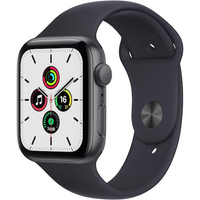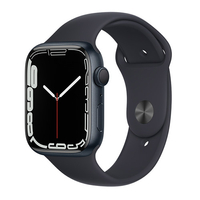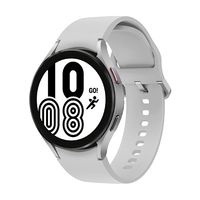Apple Watch 6 review (original) (raw)
TechRadar Verdict
While the Apple Watch remains one of the standout wearables you can buy, we're still waiting for another leap forwards in functionality and, perhaps, design too. The blood oxygen monitor is another weapon in the arsenal of health Apple is building, but isn't the headline feature most potential upgraders will be clamoring for. As ever, the incremental improvements to the battery life and display are welcome, but it feels like there's untapped potential still with Apple's wearable line.
Pros
- Great color additions
- Sleep tracking finally appears
- Always-on display
Cons
- -
Lacks a headline upgrade - -
Battery life needs to be longer - -
Siri can automatically fire easily
Why you can trust TechRadar We spend hours testing every product or service we review, so you can be sure you’re buying the best. Find out more about how we test.
Two-minute review
The Apple Watch 6 (or Apple Watch Series 6, if you want to be all proper about it) launched alongside the Apple Watch SE.
Apple Watches remain some of the most popular smartwatches despite not working with Android phones at all, serving as small second screens that connect your iPhone to your wearable.
While the Apple Watch 6 is no longer the most advanced model on the market with the arrival of the Apple Watch 7, you might be wondering whether the year-old model offers anything massively alluring; if you're thinking about upgrading from an older Apple Watch, you'll be especially keen to learn what's new here.
Well, here are the highlights: starting at 399/£379/AU399 / £379 / AU399/£379/AU599 for the 40mm version (sadly no discount despite the Apple Watch 7 being out), Apple's sixth Watch has a blood oxygen sensor inside, new colors to delight (we're into the red) and a more efficient S6 engine at its heart. It's also supposed to have a brighter display in sunny conditions – we'll come to that shortly.
Beyond that, the rest of the new features that arrive with the Watch 6, like sleep tracking, hand-wash tracking, and new buckle-less bands, will be made available to older Apple Watches.
Put shortly: the Apple Watch 6 was the company's most refined wearable to date, but there isn't enough new here that may merit upgrading. On the other hand, the Apple Watch 7 doesn't improve on much besides a 20% larger screen and brighter always-on display. Despite rumors suggesting otherwise, the Watch 7 doesn't include any new health sensors or features, so you're not missing much by opting for the slightly older Apple Watch 6 instead.
The Apple Watch 6 is still a strong contender, which is why it's maintained a place in ours best smartwatch round-up, although it's not as high as it once was.
On the outside, the Apple Watch 6 continues with the same design language used in previous models – a rounded, metal body with a square display that curves elegantly into the device itself.
The new colors and designs are interesting, with the new blue and red flavors, in particular, appealing on the wrist, the aluminum casing blending nicely with the more striking hues.
The display, using OLED technology, is as bright and clear as ever – we didn’t notice any extra brightness outside, despite the claims made by Apple, but equally we never struggled to read the display, thanks to the rich colors and good contrast ratios.
As it has been in recent years, fitness is the key focus of the new Apple Watch, and it’s more prominent than ever. A new sensor allows you to see how well-saturated your blood is with that ever-so-useful oxygen, and for the most part it works well.
However, Apple is clear that it’s not a medical tool, and should only be used for monitoring general fitness or wellness – so while it’s an interesting thing to check out from time to time, it doesn’t feel like a headline feature.
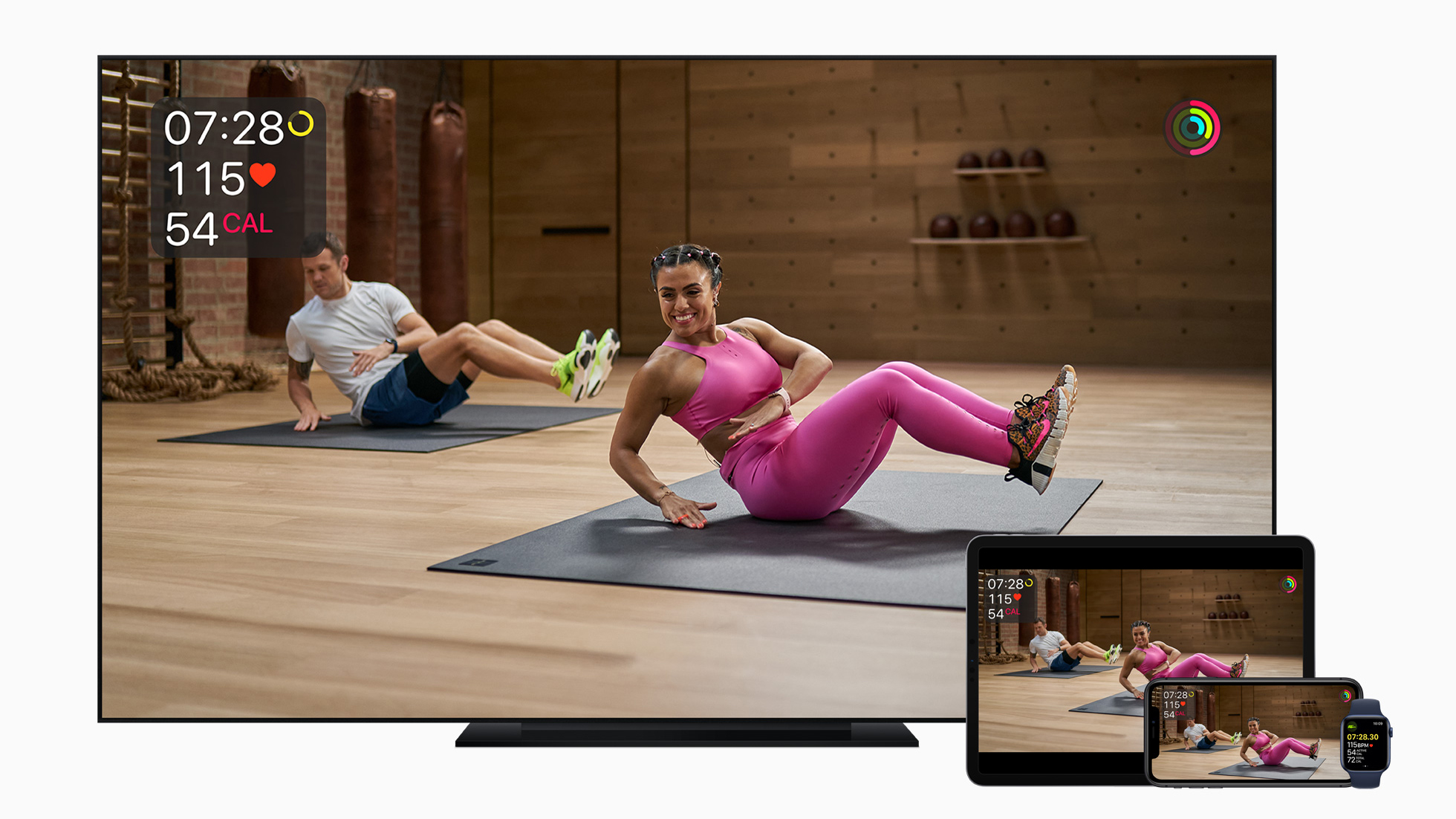
The all-new Fitness Plus service makes use of your Apple Watch data as you exercise (Image credit: Apple)
Of more interest is the new Fitness Plus service from Apple, which lets Watch users interact with fitness workouts wherever they are – and any new Apple Watch will come with three free months of workouts to try.
As an overall fitness tracker, the Apple Watch 6 feels like it’s got some incredible benefits – great activity tracking, good monitoring and motivation to stay active, a wide range of monitored activities – but there’s still no step up to a ‘pro mode’ for those who want to take their fitness to another level. There’s definitely potential Apple isn’t exploiting.
Apple Watch 6 specs
Screen sizes: 40/44mm
Weight: 39.7g/47.1g
Software: watchOS 7
RAM: 1GB
Storage: 32GB
GPS: Built-in
Battery capacity: 265.9 / 303.8mAh
Wireless charging: Yes, Qi
As ever, battery life on a new Apple Watch is strange. Once again, we regularly got far longer than the advertised 18 hours between charges, usually hitting around 28-30 hours before needing to reach for the charging cable.
The thing is, that’s still not long enough for what this Watch could do. With sleep tracking now on board, you’ve got another useful metric to help you keep on top of your health.
But you still need to work out when you’re going to find that 90-minute window each day to charge your Watch, if you’re not going to do it overnight, which is frustrating.
WatchOS 7 brings a few small upgrades – Apple’s not saying as much, but it’s clear that some are designed to help out in the current pandemic we’re facing: a hand-washing monitor just coincidentally appearing seems unlikely, and it’s a useful weapon in the fight against Covid-19, even if the monitoring is a little hard to please.
The Apple Watch 6 is quite nearly the best Apple has to offer in the wearable space, and if you’re worried about either your heart health or respiratory system, those extra features will bring you a welcome degree of reassurance.
However, for many consumers – especially those who aren’t bothered about having an always-on display – the Apple Watch SE offers nearly every feature that the Watch 6 is packing, and does it for far less cost.
Apple Watch 6 release date and price
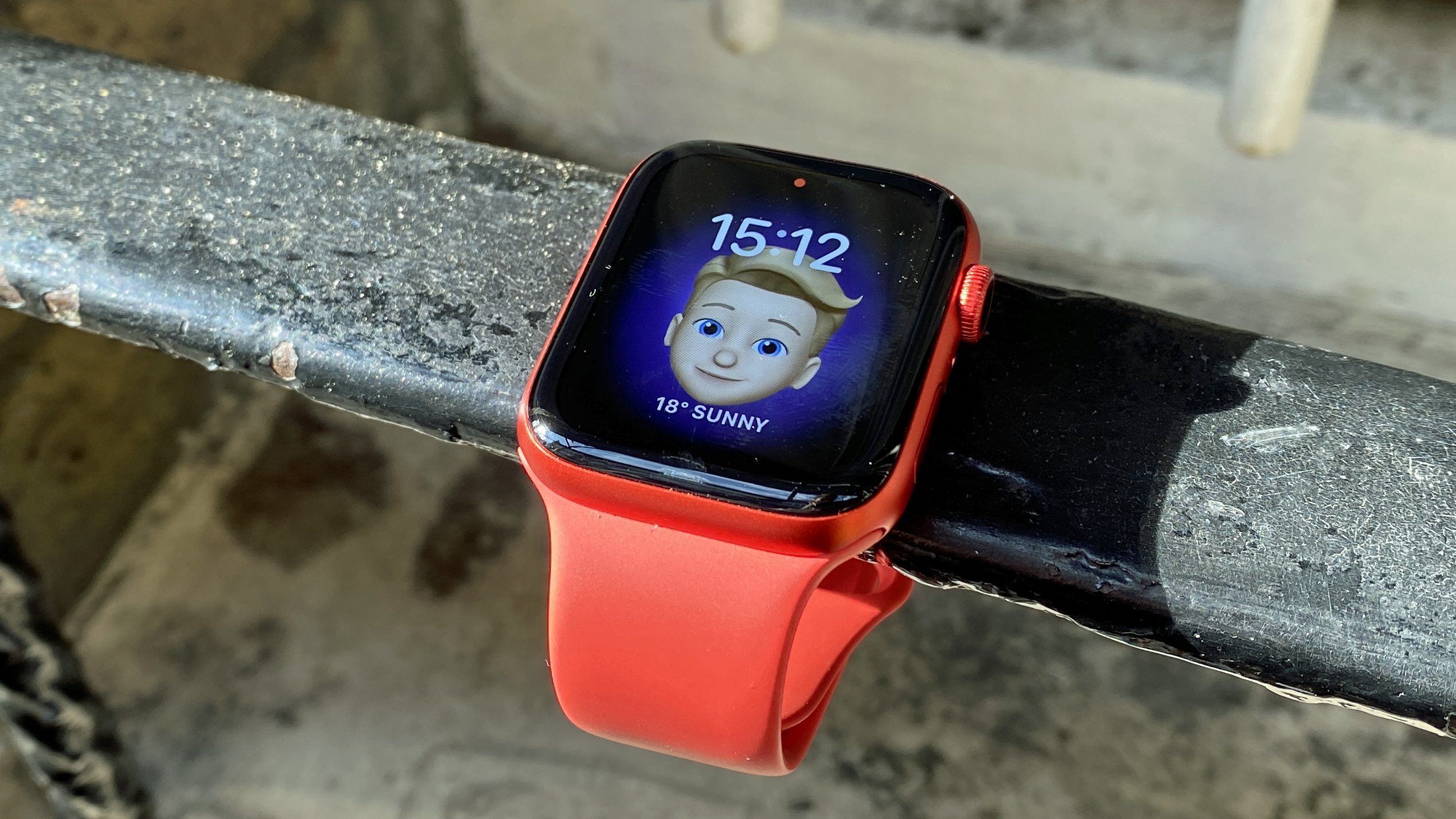
You can add in personalised 'memojis', right from the Watch itself. (Image credit: TechRadar)
The Apple Watch 6 release date was Friday, September 18, and you're able to pick one up online or in-store with (relative) ease.
In terms of the Apple Watch 6 price, you’re looking at 399/£379/AU399 / £379 / AU399/£379/AU599 for the 40mm version, while the 44mm version starts at 429/£409/AU429 / £409 / AU429/£409/AU649 (those prices are for the GPS-only version, without cellular connectivity).
If you want an LTE-ready watch, the 40mm starts at 499/£479/AU499 / £479 / AU499/£479/AU749, and the 44mm at 529/£509/AU529 / £509 / AU529/£509/AU799.
The most expensive model will still set you back 1,499/£1,449/AU1,499 / £1,449 / AU1,499/£1,449/AU2,259 if you go for the most luxurious straps and finish - but Apple still believes that fashion has a large part to play in the allure of its Watch.
And remember: you can still plump for the Apple Watch 3 for 199/£199/AU199 / £199 / AU199/£199/AU299, or try and find the similarly-specced Apple Watch 5 discounted at many retailers. The Apple Watch SE starts at 279/£269/AU279 / £269 / AU279/£269/AU429 so it's another lower-cost alternative you could opt for.
Apple Watch 6 design
- Great new colors
- Identical design to recent years
- New Solo loops to choose from
The Apple Watch Series 6 design is the same as that of any recent Apple Watch (as in, from the Apple Watch 4 onwards).
Coming in 40mm and 44mm flavors for smaller or larger wrists respectively, you'll see the same rounded edges that merge into the screen, the digital crown that spins through the interface with a simple flick of the finger, and the power button below that functions as a way to jump between apps.
On the rear of the Apple Watch 6 you've got a heart rate monitor that's been upgraded time and again, and which here includes new features like blood oxygen sensing and the electrocardiogram (ECG) monitor, in addition to checking on your regular heart rate and alerting you if things get higher or lower than normal.
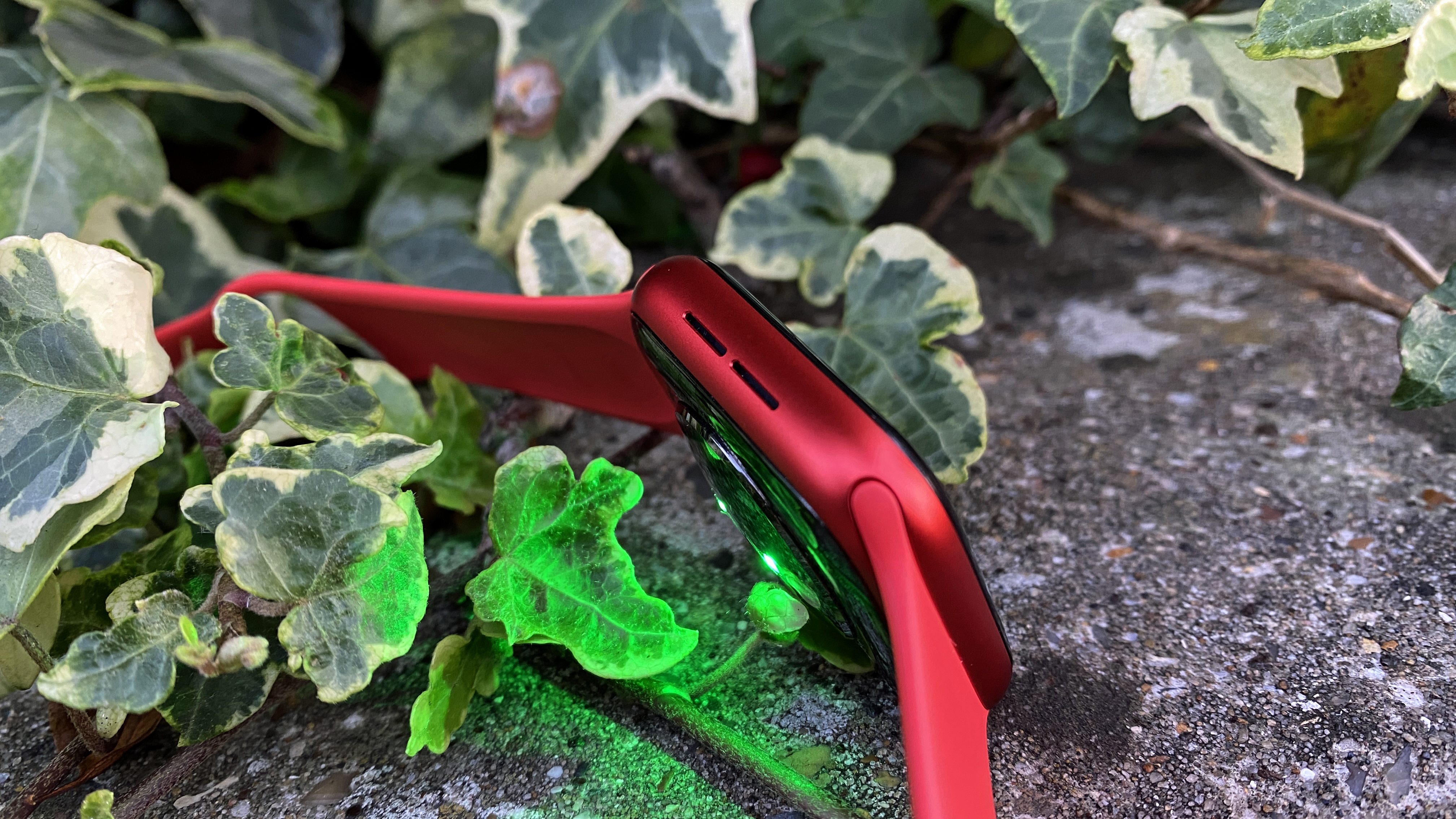
The same curved edges return. (Image credit: TechRadar)
The Apple Watch 6 is also 5ATM certified, which means it can be used for swimming and pop down to a depth of 50m for 10 minutes if you so wish - but, in reality, it means that the Apple Watch is fully protected against ‘normal’ swimming.
The bigger story in terms of the Apple Watch 6 design is the new range of colors – and the shade that’s particularly caught our eye is red. It's (PRODUCT) red, a color that Apple has used for a few years now to help promote the organization trying to rid the world of AIDS, and it's by far the most striking color of the bunch – and, happily, the one we got to review.
The other colors, (gold, silver, graphite, space gray and blue), are also premium-looking, and fit nicely with the well-manufactured feel of the Apple Watch. The price is high, granted, but you're getting a beautifully made device for your cash.
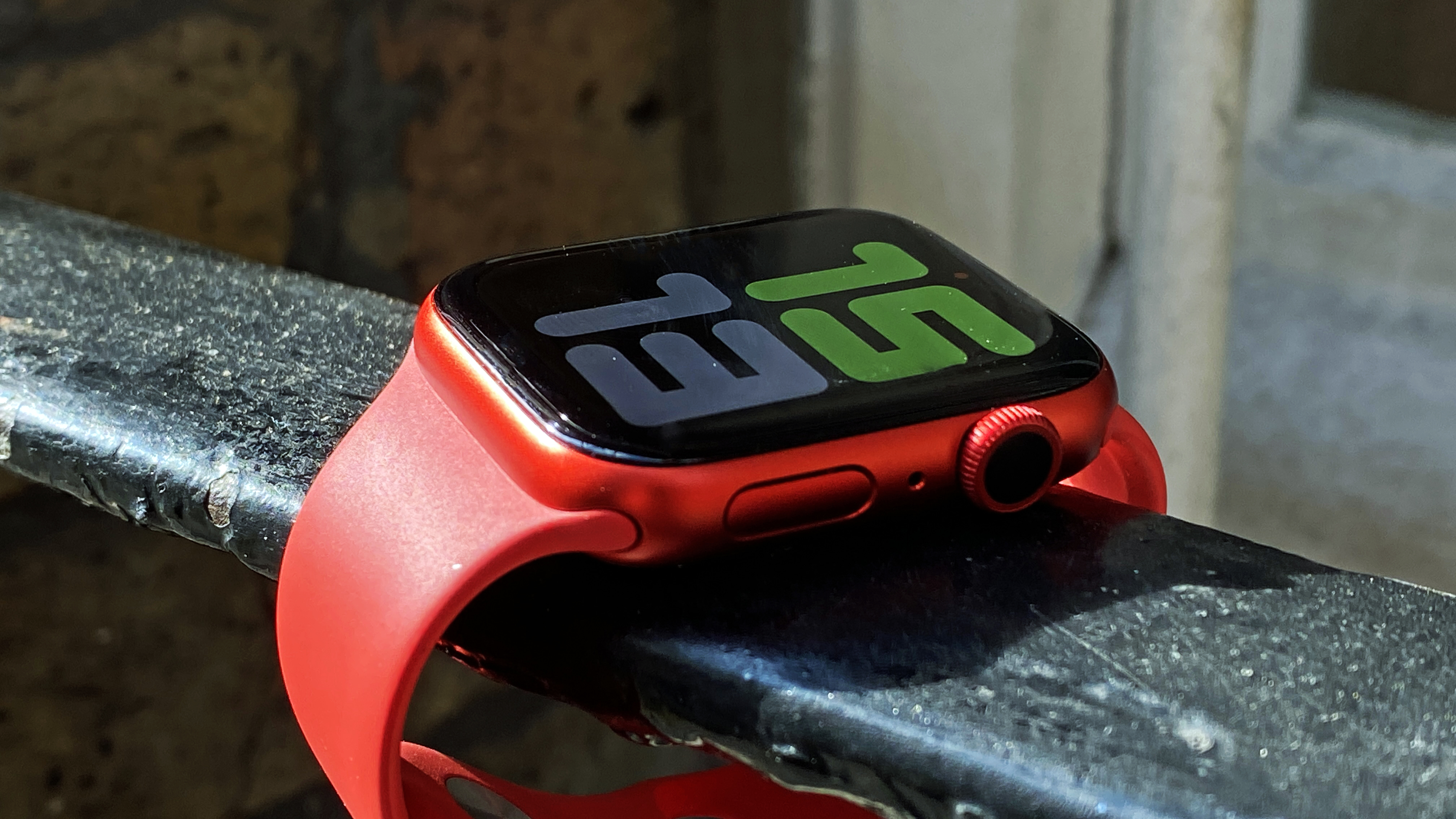
The buttons feel premium when spun or pressed. (Image credit: TechRadar)
It's lightweight too – at 36.5 grams (for the 44mm edition) we didn't feel it weighing down our wrist very often, and it's sometimes easy to forget you have it on.
As ever, you’re able to customize your Watch with different bands, and the new addition in 2020 is the Solo Loop, an (expensive) band that doesn't have a buckle or velcro to clasp it together, and which is instead made of stretchy silicone or braided silicone that you pull over your hand onto your wrist.
Sadly, the Solo Loop we were sent for review purposes was too large – it hung like a bangle around the wrist – but we could see the promise of being able to just slip it over the wrist, and not have to mess around with clasps, or worry about it flopping around during the day.
Apple Watch 6 display
- Good OLED technology
- Always-on display can be handy
- Finally dims at night when tracking sleep
The Apple Watch 6 display uses OLED technology, and it's a fine-looking screen as a result. When you're in darker places, it's only the numbers, letters or whatever's on the screen that you can see, as OLED technology enables incredible contrast between the black and white tones, which makes whatever is on the Apple Watch 6 look really striking.
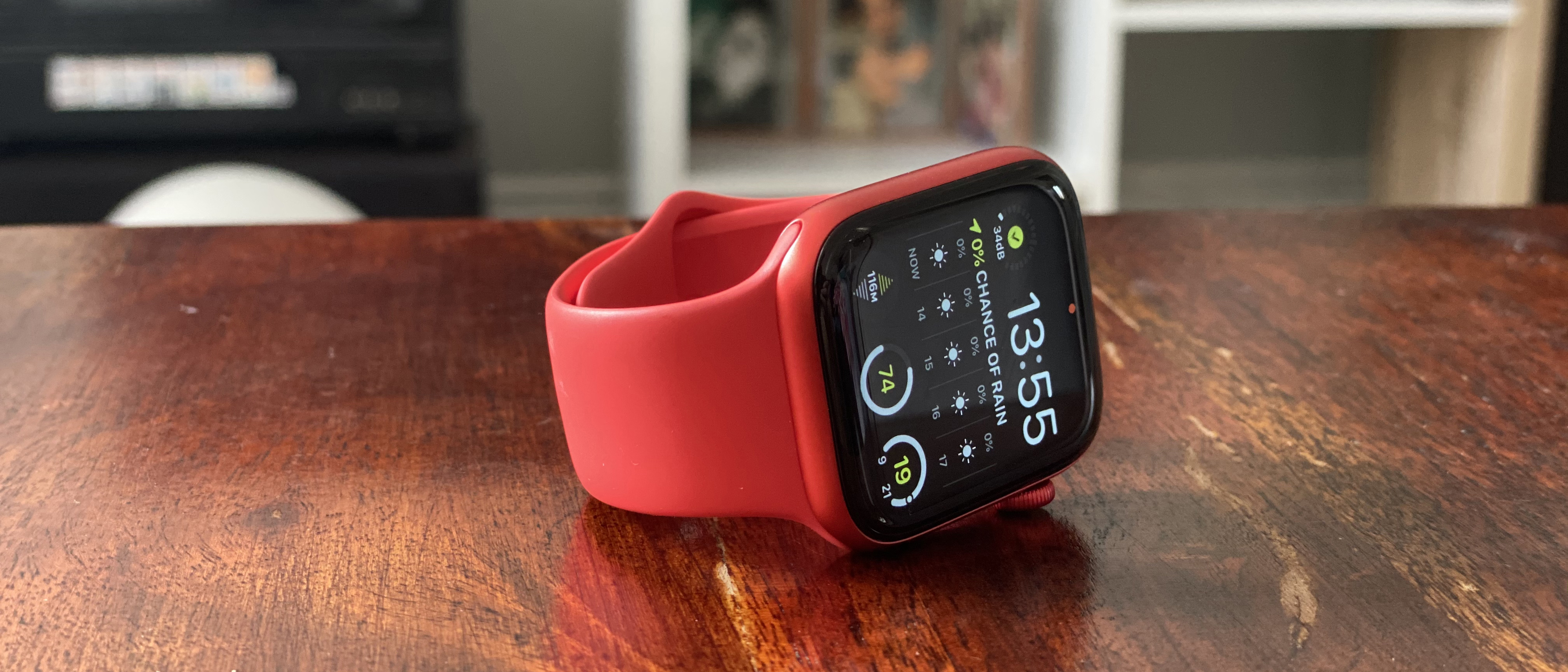
The display is clear and bright (Image credit: Future)
Where older Apple Watch models (and the new Apple Watch SE) require you to raise your wrist to see what the time is or check a notification, the Watch 6 continues where the Watch 5 left off with an always-on display.
This means you don't need to raise your wrist to see the time or an alert, and can just glance down to see what's happening. Depending on the watch face you've got set up – and there are now many – you'll also see updated info on news, health stats or battery life without needing to raise up the Apple Watch and fully wake your device (which will use more power).
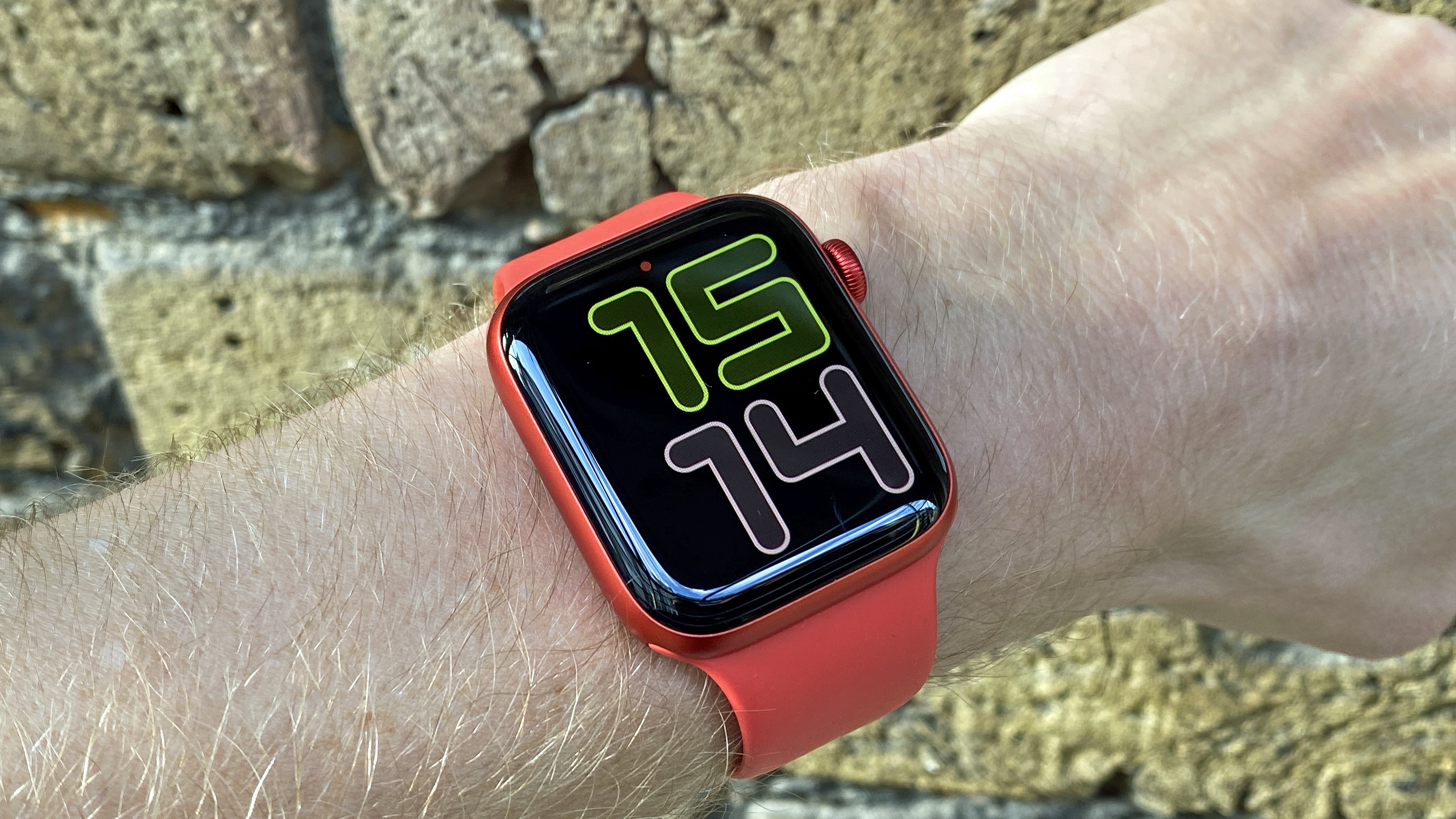
The always-on display dimmed(Image credit: TechRadar)
However, while this is useful, we feel it's still not well-implemented. The always-on display is helpful at times, but mostly we just want to see the time. The problem is that, even though the screen of the Apple Watch 6 dims when it's not being looked at, it’s still rather bright.
So whenever things get darker, you either need to put it into theater / cinema mode (which is irritating to do, and then requires a button-press to display the time), begin sleep tracking to get the low-light monochrome version of the display or just accept that your watch will be glowing rather brightly.
We'd rather there was an option for just a very, very dimly-glowing set of numbers for the time – we don't want to see the whole watch face, just a little view of the time that's not distracting.
Apple Watch 6 blood oxygen monitor
- Interesting feature
- Not designed for medical use, so can it be trusted?
- Needs alerts embedded
The Apple Watch is clearly a wearable that’s designed for fitness, and the Apple Watch 6 is the pinnacle of the company’s health and fitness ambitions thus far. Every year we get new fitness and wellness features, so let's begin with the big one for the Watch 6: the blood oxygen monitor.

(Image credit: Future)
Firstly, let's not forget that it's been around as an option on other wearables like the Fitbit Charge 4 (and phones, including members of the Samsung Galaxy range) for a long time now.
So it's not a new feature, but the question is how Apple is implementing it into the new watch, and whether it can be truly useful, especially when the world is facing a respiratory disease-based pandemic.
But before we get to that, let's just remind ourselves what a blood oxygen (or SPO2) sensor actually does. Firing red and infra-red light under the skin, the diodes on the underside of the Apple Watch 6 can read the color of your blood, and work out from that how much oxygen you're pumping around.
There are various opinions on what 'good' looks like for a percentage, but if you're over 95% then generally you're in a good place.
You can run a dedicated SPO2 test on the watch, sitting still for 15 seconds to test it, or you can have the Apple Watch 6 test throughout the day – we did both, and the results largely matched up, and for the most part we were above the 95% threshold.
But... for the most part. According to the Health app on the phone, which records this information, there was a moment when our SPO2 level fell to 88% – was that something to worry about? We assumed that, because it wasn't repeated, it was just an outlier reading, but it was still a little disconcerting to see.
And therein lies the rub with the new SPO2 sensor on the Apple Watch. On the one hand, it can be comforting to see your blood oxygen level sitting nicely where it should be… but equally, Apple is saying the Apple Watch 6 is categorically not a medical device, and should only be used for your own information (which, it should be noted, most wearables on the market with an SPO2 sensor are stating as well).
What do you do with that info if Apple says it's not designed for medical use? Should we trust it? Or should it be ignored if the results might vary with fit and motion from time to time?
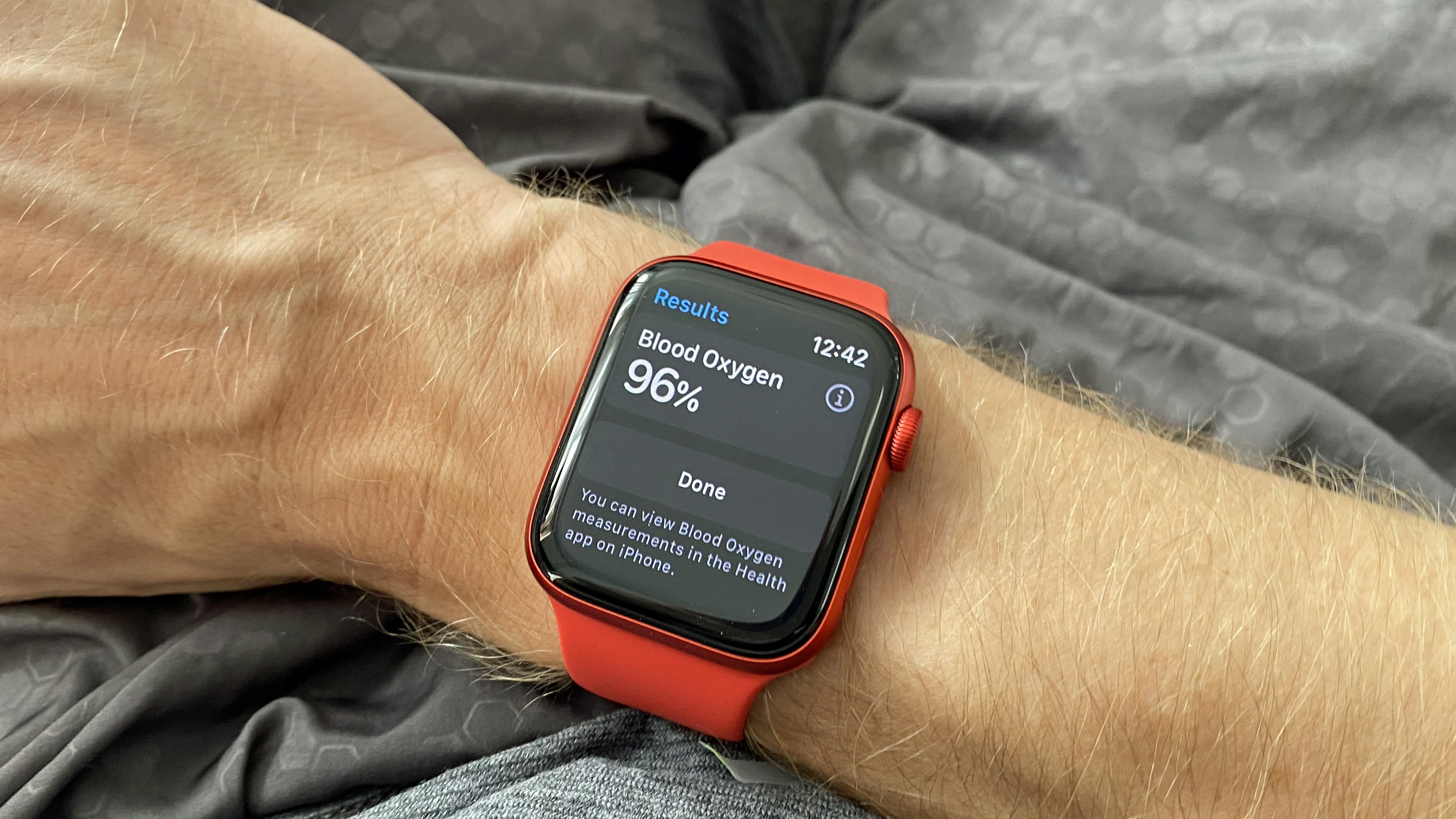
(Image credit: Future)
Well, the simple answer is: it's a nice thing to have to stay informed. If you're seeing a drop in SPO2 often at the same time as feeling other ill effects, you can head to the doctor to put your mind at rest. If you're at elevation, and suddenly the oxygen saturation level in your blood drops, you can make a decision.
But it feels odd that Apple isn't giving you notifications that your SPO2 dropped randomly through the night – which can signify the sometimes-serious condition of sleep apnea – or, advising you, when your heart rate gets lower or higher than usual at rest, whether you need to do something about it right away.
We're not sure why Apple isn't offering those alerts, and it makes it hard to say whether the SPO2 meter is particularly useful as a result.
However, combined with the ability to take an ECG and monitor your heart's regular output, it's still a comfort, and those with heart conditions would probably still gravitate towards the Watch 6 as a result.
Apple Watch 6 fitness
- New workout options
- Still needs a 'pro' fitness mode
- GPS can go slightly awry
With the new Apple Watch 6, there are so many ways to keep an eye on your general wellbeing, and being able to close your ‘Move Rings’, the metric Apple uses to let you know how active you're being.
With each new Apple Watch release, the brand brings more ways to track your efforts so you truly know how active you are, and encourage you to try news things as well.
As regular readers of TechRadar will know, we're really into running. Chucking on a Garmin or Apple Watch and going for a few miles’ jaunt is something we regularly enjoy, and the Apple Watch is getting better at monitoring that each year.
Running is now joined by more activities than ever, with dancing and ‘cooling down’ being added to the growing roster of fitness features.
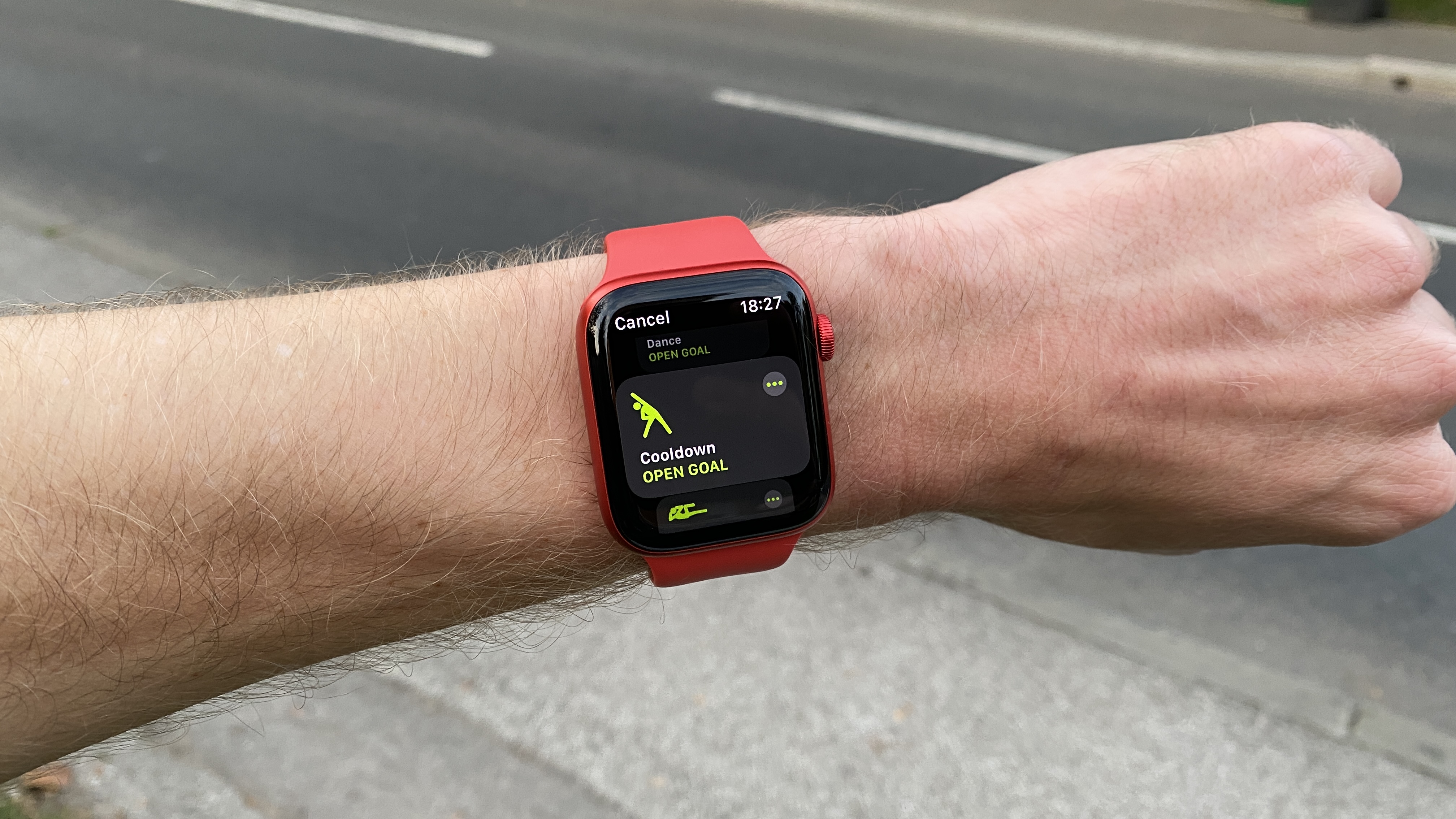
(Image credit: TechRadar)
But it’s not just about moving: the Watch helps with being mindful and meditating (the latter is made especially easy thanks to the onboard 'Breathe' app, which tickles your wrist with small vibrations to tell you when to breathe in or out).
With your Watch both monitoring these activities and monitoring your heart rate, you're getting an accurate calorie burn, so you can see how well you're doing if you're on a fitness kick.
The Apple Watch 6 (and others in the Watch range) will also help you on your way to your goals of standing enough times, moving enough or getting enough exercise by prompting you at times through the day to get active when it thinks you have a moment to do it – it's rather helpful.
However, the fitness tracking on the Apple Watch is also limited in a few ways too. We took the Watch 6, Watch SE, Watch 5 and Watch 4 out for a 15-mile run, and there are still a few things the Watch 6 hasn't fixed.
Firstly, the running part of the Workouts app is still a bit limited. Apple makes it so that the GPS inside (which should be fairly accurate, as you can connect to multiple satellites to find your location) doesn't have to 'lock' before you need to start running, in order to just get you out and pounding the pavement.
It's good when you're starting out, but less accurate when you build up to longer distances. Comparing the Watch range to the Garmin, which does require a proper GPS lock before starting, there was a small disparity in our distance-run numbers, especially when going through tree-covered environments.
It also varied quite a bit when doing the same run time and again – when doing the same 6.5-mile course with the Watch SE and the Watch 6, we saw a 0.2-mile disparity, and quite different mile splits throughout – which doesn’t breed complete confidence in the distance and speed tracking.
However, on other shorter runs the distances were pretty comparable, so it can quite often just depend on the terrain and how strongly the GPS signal can be picked up.
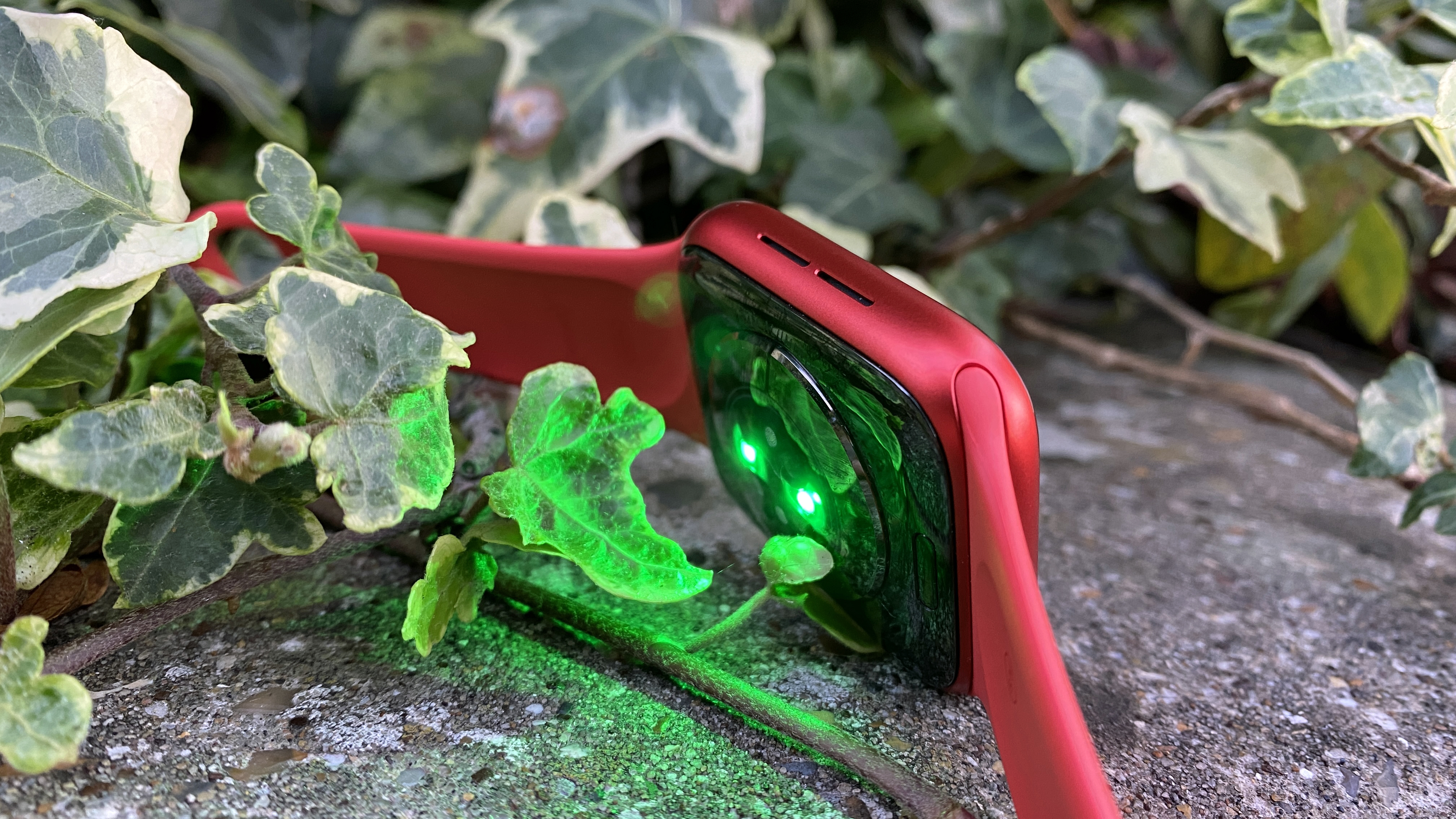
(Image credit: TechRadar)
There's also the heart rate monitor on the rear – we often find that this on-the-wrist pulse-monitoring technology is less accurate than wearing a chest strap, and there were times when the Apple Watch 6 clearly struggled to keep a track on our heart rate when we were running.
That shouldn't put off prospective Watch owners who like the idea of a heart rate monitor on their wrist – it was as good as anything we've tested of late, bar some really high-end running watches; it's just that it still lost connection from time to time.
Placing the Watch higher up our arm helped with the accuracy (as it’s easier for the sensor to read the pulse through the skin here), but it wasn’t comfortable and fell forwards eventually.
The Apple Watch 6 still feels like a fitness wearable for everyone, appealing to the masses rather than the fitness fiend. And that's the right way round – those who want something more dedicated can easily find it elsewhere.
We want to wear the Watch 6 for everything, though, so it would be great if Apple equipped this device with a way to set up interval training, more easily see laps when you're trying to beat a mile PB, or just step up the Workouts app to encourage those who’ve been training with the Watch for years to go to the next level.
Right now fitness on the Apple Watch still feels a bit basic, and after all these years we were hoping to see a little more depth.
Apple Watch 6 battery life
- Easily lasts a full 24 hours, and often longer
- Fast charging is a godsend
- S6 internal chipset makes activities more efficient
The Apple Watch 6 battery life is another thing we wish was improved this year – it's a key thing that's holding back the Apple Watch range from being an instant recommendation.
We noticed last year that the addition of the always-on display had a real impact on battery life, and while the new S6 chipset inside the Watch 6 has definitely improved the power efficiency, it hasn’t solved some key issues.
Let's start with one of the oddest things Apple does: it constantly under-represents the battery life of its Watch range. Since the very first model of Watch, the claimed battery life has always been far too stingy – Apple calls it 'all-day battery life', and pegs the Watch 6 to last 18 hours in general use.
Well, we always had it connected to a phone or Wi-Fi all day, and we took it running, controlled music, used apps – and we still always got over 24 hours of use before needing to reach for the charger.
However, while that might sound like a good thing, in reality 24 hours isn't much more helpful than 18, especially when you factor sleep tracking into the mix. Now that watchOS 7 allows you to monitor your slumber, you really need a device that you can take to bed at night and will have a decent slug of battery remaining when you wake up.
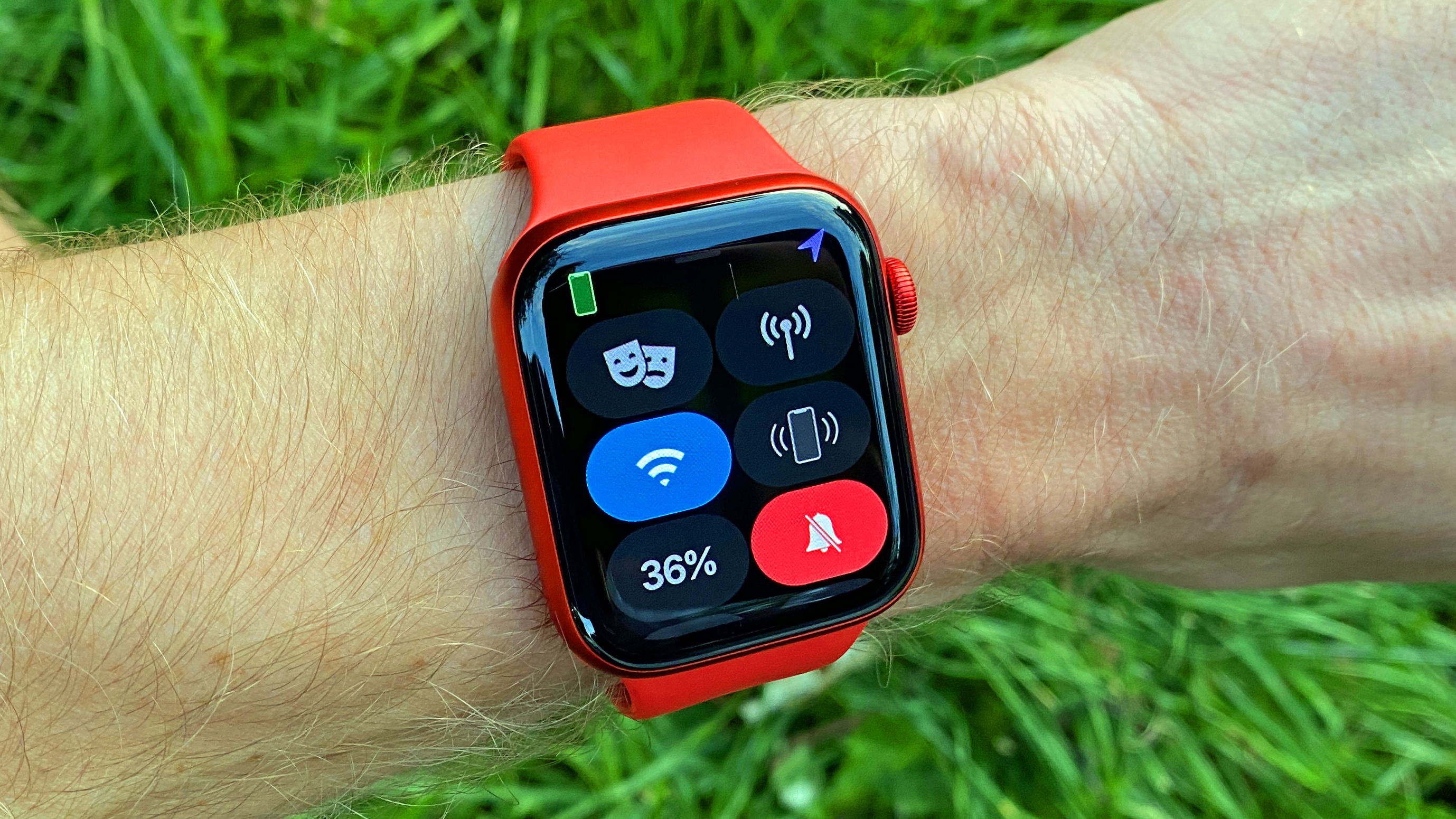
(Image credit: TechRadar)
The Apple Watch 6 can just about manage this, but you'll need to charge it fairly soon after waking – so if you're going to use this Watch to the fullest, and get your sleep-track on, then you'll need a daily window where you can charge it.
On the plus side, the S6 chipset inside the Apple Watch 6 is, indeed, the most efficient processor Apple has ever put in a wearable. You’d expect the combination of the always-on display and the SPO2 sensor would be far more of a battery-drain than on the Apple Watch SE, for instance; but, over a 15-mile run, 110-minute run we found that the Watch 6 actually used less battery than the SE, as Apple has made the GPS tracking more efficient.
The same is true for music playback, so these smartwatch features are less of a problem, battery-wise, on Apple’s latest model.
The Watch 6 also charges much faster than previous models – in a side-by-side comparison with the Watch SE, from 0% the Watch 6 was fully charged in 75 minutes, while the Watch SE, with the older S5 chip, took 100 minutes to fill up.
In ‘normal’ use, that is with the SPO2 sensor and always-on display firing, the Watch 6 will last 20% less than the Watch SE in the same usage conditions, although of course you can always turn these features off – you won’t be getting the same functionality, but it is a way to get the best battery life on any Apple Watch.
With all the settings turned off you’ll get comparable battery life to the Apple Watch SE, but with more longevity during workouts or listening to music.
And don’t forget: there’s no charging block in the box any more (but you do get a charging cable). That said, if you’ve not got a USB charging block lying around somewhere, we wonder where you’ve been for the last decade.
Apple Watch 6 watchOS 7
The Apple Watch 6 is the showcase for the 7th version of Apple’s wearable operating system, but the usual caveats apply: the same features (blood oxygen monitoring excepted) are also coming to the new Apple Watch SE, and will be rolled out to every device from the Watch 3 onwards.
While the Series 6 can also upgrade to the 8th-gen version too, and many newer ones that get released, we tested it on watchOS 7.
However, we’re interested in testing how these new features perform on the Watch 6, to see how well-optimized the device is for them. There are some we’ve not delved into here, such as dancing and cool-down monitoring in fitness, new ways to personalize and share your Watch face with your own complications, and mapping your bike rides on the go – you can find out all about those, and others, in our dedicated watchOS 7 hub.
Sleep tracking
The first thing we wanted to try out with the new Apple Watch was sleep tracking, which has finally turned up on a wearable from Apple.
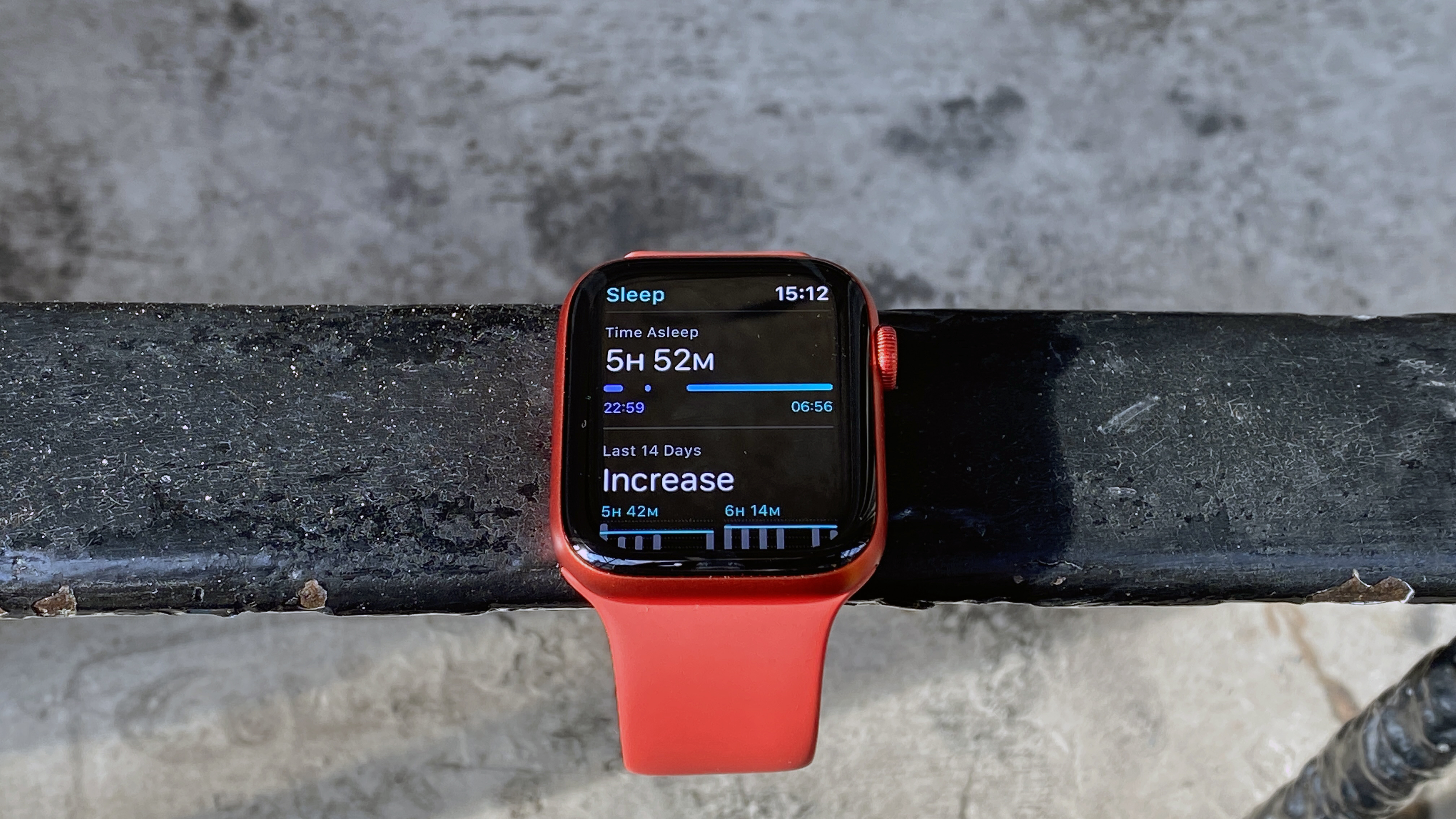
(Image credit: TechRadar)
It’s a particularly welcome feature for those who are already wearing their Watch in bed, not least because you can set the time you’re going to sleep and the display becomes monochrome, and you won’t be able to wake it easily, as you’ll need to spin the digital crown to get back in – it’s an excellent way to help you resist the temptation to check that last notification when you’re supposed to be sinking into slumber.
The sleep tracking itself is very basic indeed, though. It’ll work out when you got into bed based on when you put down your phone, and will then monitor how long you’re asleep for. This data is fed into the Health app on your phone, so you’ll be able to see how your sleep time is increasing or decreasing over a period.
There’s no information on whether you spent time in deep sleep, light sleep or REM, nor any correlation with bedtimes, or how stressed you were during the day – these are fast becoming standard features on other fitness wearables, so we expected more from Apple here.
The wake-up screen is nice, showing you the amount of battery left and the weather for the day – so while it is a limited feature, the elements it does have are well executed.
Hand-washing monitoring
The hand-washing feature apparently wasn’t created in response to the Covid-19 pandemic, but its presence on the Apple Watch 6 is useful for reminding you to wash your hands for 20 seconds, providing a countdown as you do so.
It’s a feature that started off being quite erratic for us, but over the space of a few days it became more accurate.
We’ve been wearing both the Watch SE and the Watch 6 for the testing period, and rarely did they both fire at the same time when we turned on a tap and began scrubbing up – there was often a five-second disparity.
The hand-washing feature is also rather hard to please – if you’ve not got your hands near a running faucet, but are still washing them fairly vigorously, the Watch will pause the countdown timer. This feels unfair when you are actually washing your hands, but the upshot is that you just end up washing for longer to satisfy the Watchful gaze from your wrist.
In fairness, this must be an incredibly hard feature to get to work well – the Watch has to listen for the specific sound of running water at the same time as detecting a very specific hand motion, so it’s actually quite impressive that it works as often as it does.
Translations
The final feature we’ll nod to here is the translation capability of Siri – which, by the way, is pretty sensitive on the Apple Watch 6, activating far more often than it’s meant to, even when you’re not talking to the Watch.
However, say something like “Translate ‘I’ve got a lovely bunch of coconuts, there they are all standing in a row, big ones, small ones, some as big as your head’ into French” and the voice assistant quickly turns around the response – and plays it with the correct accent too.
There are a wide range of languages that Siri can translate into – Mandarin, French, German, Italian, and Spanish – but you can’t have a conversation from your wrist, as the Watch can’t translate back into English yet.
Other features we used
As mentioned, watchOS 7 is built on a system that packs lots of useful (and some not-so-useful) functionality at its heart. The main one that we’ve been using is raising to speak to Siri - where you don’t need to say ‘Hey Siri’ or hold the button - just raise your wrist and start speaking.
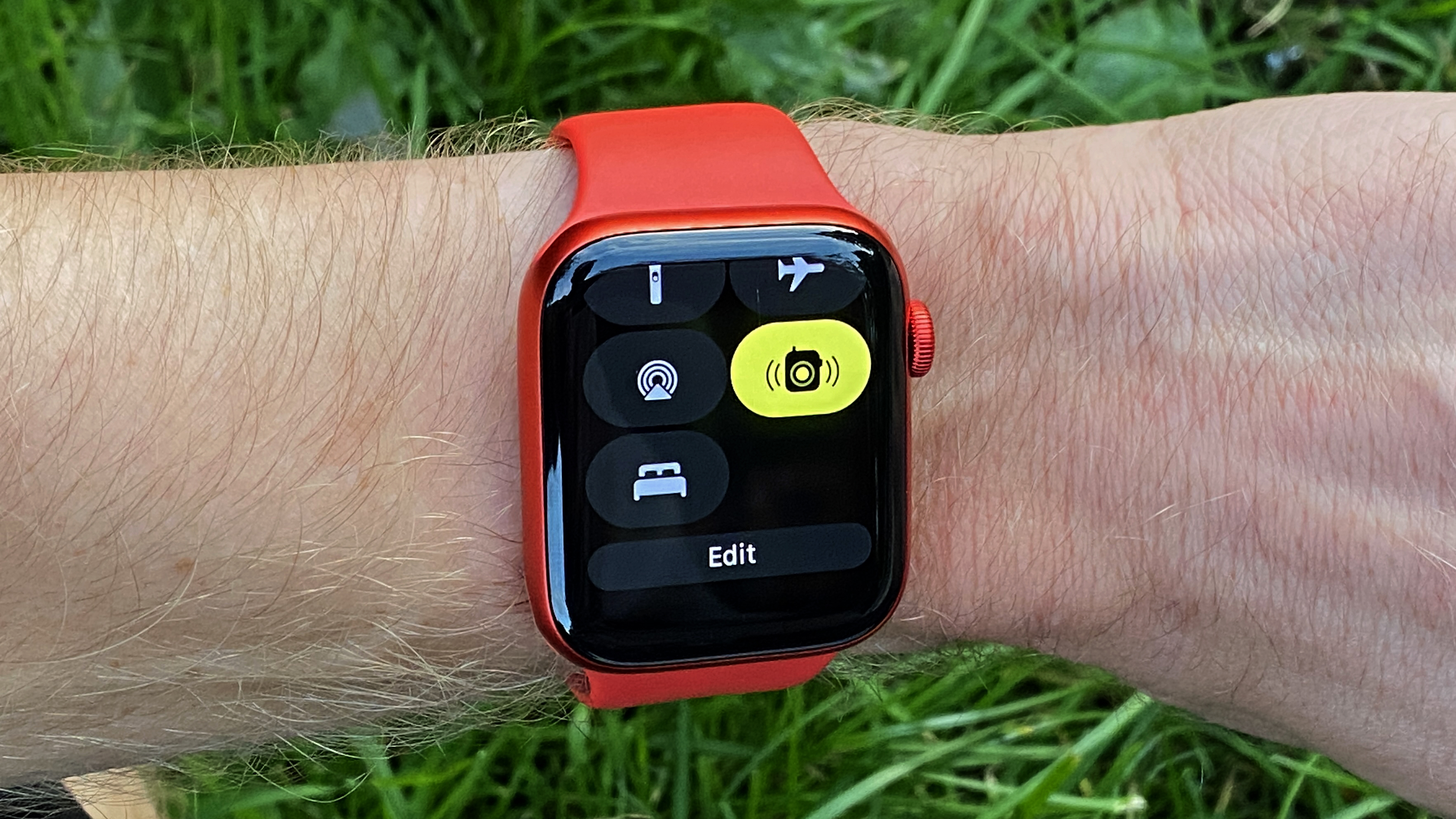
Walkie-talkie mode - used less, still excellent (Image credit: TechRadar)
When it works, it’s brilliant, enabling you to instantly set a timer, find out what song is playing, call a friend, or turn off a light in your smart home.
You do need to get the gesture right though, and too often we found that Siri wasn’t in fact listening, which turns you off from using a voice assistant instantly, especially if other people can see you.
One thing we haven’t mentioned is the use of cellular data with your Apple Watch. The amount of times you’ll need it are limited – having the ability to have Siri with you when your phone isn’t, or to make a call, or listen to an Apple Music playlist is nice, but the extra cost of the data plan is less appealing.
However, talking of phone calling, we did take a couple of calls using the Apple Watch when our iPhone was in another room, and the speaker is clear and crisp, with the microphone picking up every word – it’s important to appreciate just how cool it is to be able to do this.
One element we didn’t use much was Walkie-Talkie mode – in the last year, we’ve found that the people we would chat to (while hilariously saying ‘over’ at the end of each sentence) using this method has dropped to the point where we now feel like we’re just going to be irritating by requesting a chat.
We did go back to using the feature to talk to one pal we used to regularly communicate with – but it feels like something that it’s only fun to use in short bursts from time to time, rather than an integral feature.
The final thing we tried was the Watch App Store, to see if it had progressed in the last year. In some ways it has, with there being more Apple Watch apps available than ever – but the opening screen of the App Store on the Watch makes you feel like there’s not much there.
There are no categories to dig into, or long lists of tailored recommendations, just a short list of seemingly-random options, and while we like the idea of being able to grab a new app without needing to reach for our phone, it doesn’t really feel like it’s worth the effort of doing so on the small screen when the larger iPhone can do the job so much more effectively.
Should you buy the Apple Watch 6?
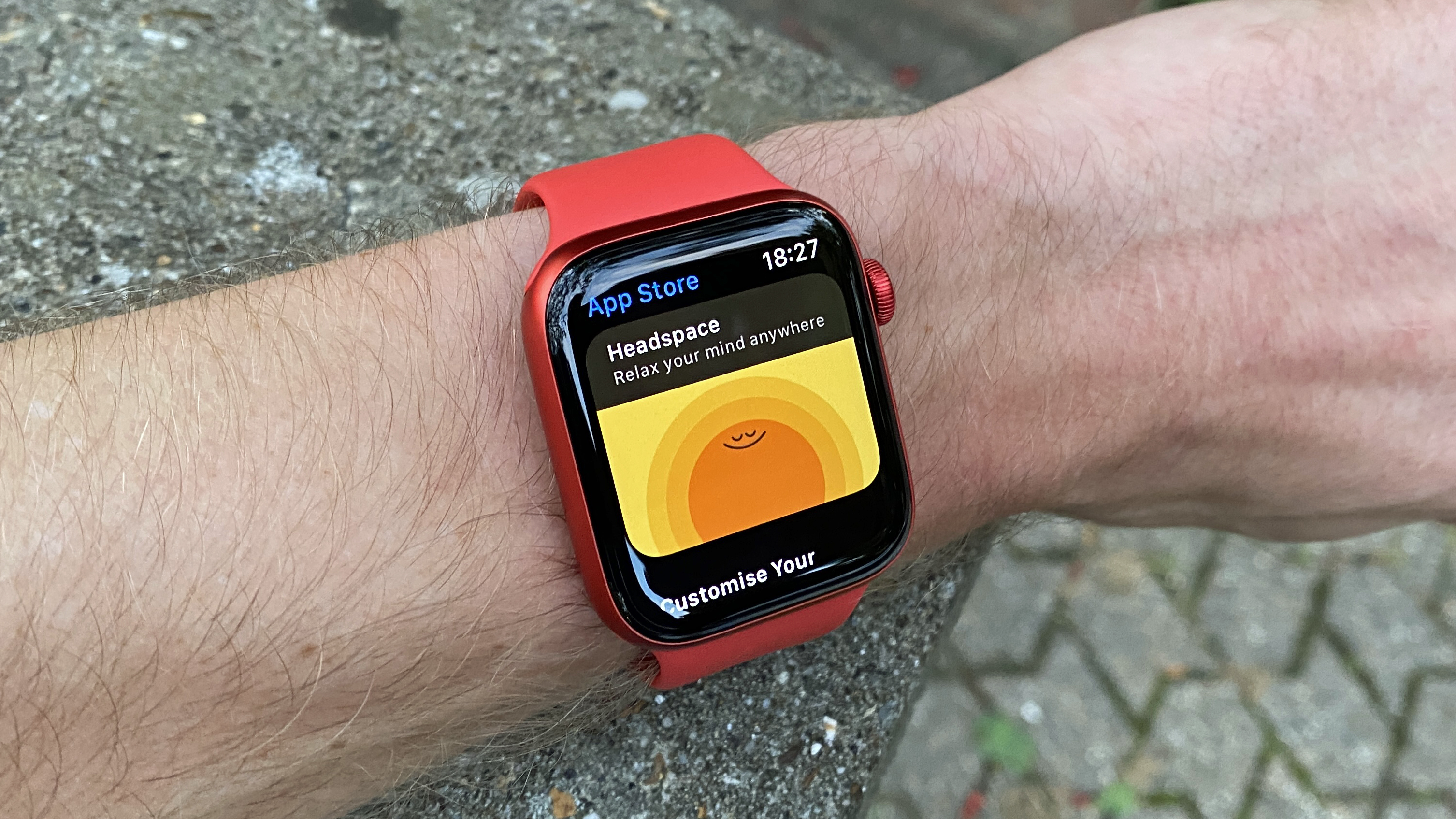
(Image credit: TechRadar)
Buy it if...
You want to future-proof yourself If you know you’re going to hold onto it for a few years, you should always go for the most modern version of whatever Apple thing you’re going to buy – it’ll be supported for longer with updates, it’ll offer longer battery life, and it’ll offer the widest range of features.
You’re into the color red We know it sounds shallow, but the red color of the Apple Watch 6 really is striking – it’s easily the favorite version we’ve strapped to our wrist.
You have health concerns Caveat again: Apple does not want you to use the Watch 6 as a medical device. But being able to take regular ECGs, or having a background monitor of your blood oxygen, is useful if you have any conditions where those are issues – and the heart rate alerts bring peace of mind too.
Don’t buy it if...
You don’t mind raising your wrist The only real reason we can see why many people would want the new Watch 6 is that it’s now the only one you can buy from Apple with the always-on display. If you’re okay with doing a ‘wrist flick’ to see the time, then go for the Watch 3 or SE and save money.
You’ve got ‘into’ fitness If you’ve been using an Apple Watch for a while, and are more serious about fitness, the Watch 6 isn’t great for things like interval repeats, checking your lap speed or adding in easy rest stops in a swim session. Apple needs a Watch Pro as soon as possible, in our opinion.
You want regular sleep insights While it’s cool to be able to track how long you’re sleeping each night over time, it’s more useful to know the quality of that sleep – and the Watch 6 isn’t offering that natively. If you need a separate app for it, you might as well go for a dedicated model like a Whoop Strap or Fitbit Sense.
Also consider
If this Apple Watch 6 review has you considering your alternatives, here are some other smartwatches you may want to consider.
Apple Watch SE
The Apple Watch 6's affordable contemporary, the SE has fewer features (including no always-on display) but it costs less too - perfect for if you don't need all the Series 6's newest features.
Check out our Apple Watch SE review
Apple Watch 7
The biggest upgrade that the Series 7 watch brings is in the display - it's a bigger and better-looking screen than the Series 6 gets. It also charges quicker.
Check out our Apple Watch 7 review
Samsung Galaxy Watch 4
If you're an Android user, then you can't use an Apple Watch - instead, Samsung's alternative has similar features and works on Android devices.
Check out our Samsung Galaxy Watch 4 review
First reviewed: September 2020

Formerly Global Editor in Chief
Gareth has been part of the consumer technology world in a career spanning three decades. He started life as a staff writer on the fledgling TechRadar, and has grew with the site (primarily as phones, tablets and wearables editor) until becoming Global Editor in Chief in 2018. Gareth has written over 4,000 articles for TechRadar, has contributed expert insight to a number of other publications, chaired panels on zeitgeist technologies, presented at the Gadget Show Live as well as representing the brand on TV and radio for multiple channels including Sky, BBC, ITV and Al-Jazeera. Passionate about fitness, he can bore anyone rigid about stress management, sleep tracking, heart rate variance as well as bemoaning something about the latest iPhone, Galaxy or OLED TV.
